CURATORIAL STATEMENT BICE CURIGER – BIOGRAPHICAL NOTES
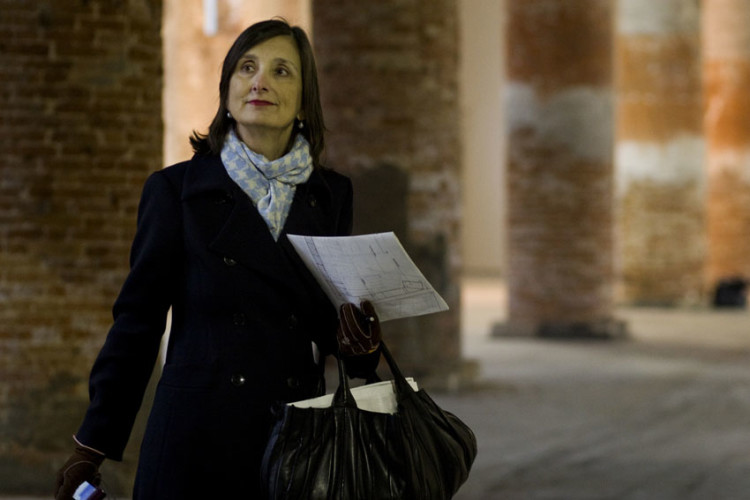
Curatorial Statement Bice Curiger
La Biennale di Venezia | 54th International Art Exhibition
ILLUMInazioni – ILLUMInations
Bice Curiger
La Biennale di Venezia is one of the world’s most important forums for the dissemination illumination of current developments in international art. The title of the 54th International Exhibition, ILLUMInations, literally draws attention to the importance of such endeavours in globalized world. As the biggest and oldest Biennale, la Biennale di Venezia has always buoyed by an international spirit, and even more so now in an age in which artists have become multifaceted, discerning migrants and cultural tourists.
Questions of identity and heritage have long been crucial to contemporary art and intensity of artistic inquiry into these issues is unlikely to diminish in the near future. Art is seedbed for experimentation with new forms of “community” and for studies in and affinities that will serve as models for the future. The title also suggests a wide of associations, from Arthur Rimbaud’s wildly poetic “Illuminations” and Walter Benjamin’ “Profane Illuminations” on the surrealist experience to the venerable art of illuminated manuscripts and the philosophy of illumination in 12th century Persia.
ILLUMInations emphasizes the intuitive insight and the illumination of thought that is by an encounter with art and its ability to sharpen the tools of perception. While the Biennale “Making Worlds” highlighted constructive creativity, ILLUMInations will focus on “light” of the illuminating experience, on the epiphanies that come with intellectual comprehension. The Age of Enlightenment also resonates in testifying to the enduring vibrancy of its legacy. Despite the fact that, in recent years, idealization of enlightened reason and a specific brand of European western scholarly have come under fire, we cannot help respecting and even defending their value in regard to the debate on human rights.
In organizing a Biennale today, it is vital to bear in mind that contemporary art is by collective tendencies and fragmented identities, by temporary alliances and objects which the transitory is inscribed – even if they are cast in bronze. The expansive drive has propelled art since the 1960s has turned inwards. Art no longer cultivates the pathos anti-art. Perception is now focused on the foundations of culture and art in order to semantic conventions from within. On one hand, the artefact has given way to an on process, while, on the other, the revival of “classical” genres like sculpture, photography and film is motivated by an interest in dissecting their codes and their dormant potential. These concerns go hand-in-hand with another aspect that is of relevance today: art strongly engages and commits its viewers.
Many of the works presented at the 54th International Art Exhibition have been especially for the occasion by such artists as Monica Bonvicini, James Turrell, Nicholas Norma Jean, R.H. Quaytman, Haroon Mirza, Loris Gréaud, Carol Bove, Gelitin, Dayanita and Christopher Wool, often referring directly to the theme of ILLUMInations. In it works the Venetian painter Jacopo Tintoretto (1518-1594) will play a prominent role in an artistic, historical and emotional relationship to the local context. These paintings exert special appeal today with their almost febrile, ecstatic lighting and a near reckless approach to composition that overturns the well-defined, classical order of the Renaissance. self-reflection is a defining factor of contemporary art, it rarely moves beyond the covered by the history of Modernism. The incorporation of Tintoretto’s work from the 16th century into la Biennale di Venezia transmits unexpected, stimulating signals and casts light on the conventions of the art trade regarding both old and contemporary art. The analogies of interest in this juxtaposition are not formal in nature but rather reinforce the significance of works of art as visual vehicles of energy.
The 54th International Art Exhibition should emerge and develop in a process of inspired exchange and mutual stimulation with the artists. We asked four artists (Monika Sosnowska, Franz West, Song Dong and Oscar Tuazon) to create so called “parapavilions” to host other artists’ works. Although ILLUMInations is primarily focused on the presentation of younger artists, an older generation will also be represented, whose vibrant, highly contemporary work deserves to be showcased, for instance Llyn Foulkes (*1934), Luigi Ghirri (*1943-1992), Jack Goldstein (*1945-2003), Gedewon (*1939-1995) and Jeanne Natalie Wintsch (*1871-1944).
Art is a highly self-reflexive terrain that cultivates a lucid take on the outside world. communicative aspect is crucial to the ideas underlying ILLUMInazioni, as demonstrated in art that often declares and seeks closeness to the vibrancy of life. This is more important now than ever before, in an age when our sense of reality is profoundly challenged by virtual and simulated worlds.
Bice Curiger, March 2011
Bice Curiger
Biographical notes
A graduate of the University of Zurich, Bice Curiger is an art historian, critic and curator of exhibitions at an international level. Since 1993, she has been curator at the Zurich Kunsthaus, one of the most important museums in the world for modern and contemporary art as well as for its collection of 500 years old artworks and which has for years implemented a major exhibitions programme of international significance.
Bice Curiger is co-founder and editor-in-chief of “Parkett”, one of the most authoritative and innovative contemporary art magazines in the world, published in Zurich and New York since 1984. Since 2004, she has been publishing director of the “Tate etc” magazine produced by London’s Tate Gallery.
Bice Curiger was Rudolph Arnheim Professor at Humboldt University, Berlin from 2006 to 2007. She was a member of the DAAD Jury, Berlin from 1988 to 1992, and a member of Switzerland’s National Council for the Arts from 1984 to 1994.
She curated several exhibitions, among which:
– 2009 “Katharina Fritsch” exhibition at the Kunsthaus Zurich and the Deichtorhallen Hamburg
– 2007 “Peter Fischli/David Weiss” retrospective, organization with Tate Modern London, later exhibited at the Musée d’art moderne de la ville de Paris, Fondazione Trussardi Milan, Deichtorhallen Hamburg
– 2006 “The Expanded Eye – Stalking the Unseen”, exhibition at the Kunsthaus Zurich
– 1998-2005 exhibitions at the Kunsthaus Zurich: “Martin Kippenberger – Early Paintings, Sculptures and all the Posters”, “Sigmar Polke – All the Editions”, “Thomas Hirschhorn – Award the Zurich Art Association”, “Hypermental – Rampant Reality from 1950-2000, from Salvador Dalì to Jeff Koons”, “Public Affairs – Art in and for the public, form Joseph Beuys to Andrea Zittel”, “Georgia O’Keefe”, “Sigmar Polke – Work & Days”
– 1997 “Birth of Cool – American Painting from Georgia O’ Keefe to Christopher Wool” exhibition at the Deichtorhallen Hamburg and the Kunsthaus Zurich
– 1996 (with Jacqueline Burckhardt) first Meret Oppenheim Museum travelling show in the USA, starting at the Guggenheim Museum, New York
– 1995 (with Jacqueline Burckhardt) “Meret Oppenheim” exhibition at the Museo d’arte moderna, Mendrisio, Italy
– 1995 “Signs & Miracles – Niko Pirosmani and the art of presence” exhibition at the Kunsthaus Zurich and the Centro Galego de Arte Contemporanea, Santiago di Compostela, featuring Mario Airò, Stephan Balkenhol, Katharina Fritsch, Robert Gober, Damien Hirst, Jeff Koons, Pipilotti Rist, Tony Oursler, Sigmar Polke, Cindy Sherman
– 1992 (with Lynne Cooke and Greg Hilty) “Doubletake, Collective Memory & Current Art” exhibition at the Hayward Gallery London, and the Vienna Kunsthalle
– 1992 (with Hans-Ulbrich Obrist and Bernard Marcadé) “Emma Kunz and contemporary artists from Giovanni Anselmo to Heimo Zobernig” exhibition at the Centre Cultural Suisse, Paris
– 1991 “Meret Oppenheim“ exhibition at the Centre Cultural Suisse, Paris
– 1991 “Sigmar Polke“ retrospective at the Museum of Contemporary Art, Chicago
She is the author of a number of publications on contemporary art, among which:
– “The Collected Writings” (Lindinger+Schmid, Regensburg, 2002)
– “Looks and tenebrae” (Peter Blum Editions, New York and Zurich, 1983), a monograph on Meret Oppenheim
– “Spuren durchstandener Freiheit” (ABC Publisher, Zurich, 1982, English translation 1990, MIT Press, Boston)
– “Meret Oppenheim. Tracce di una libertà sofferta” (Fidia Edizioni d’Arte, Como-Lugano, 1995, translated by Luisa Lucchetti
..)(..
La Biennale di Venezia | 54th International Art Exhibition
ILLUMInazioni – ILLUMInations
Bice Curiger
La Biennale di Venezia è uno dei forum più importanti per la diffusione e la riflessione sugli sviluppi attuali dell’arte. Il titolo della 54. Esposizione Internazionale d’Arte, ILLUMInazioni, pone letteralmente l’accento sull’importanza di questa funzione e capacità della Biennale, anche in un mondo globalizzato. La più prestigiosa nonché la progenitrice di tutte le biennali d’arte internazionali è animata oggi da uno spirito che trascende i confini nazionali, in un’epoca in cui gli artisti stessi hanno un’identità poliedrica e sono diventati migranti consapevoli e turisti della cultura.
Le questioni d’identità e di patrimonio culturale sono da tempo cruciali per l’arte contemporanea, ed è improbabile che l’intensità dell’indagine artistica su questi temi diminuirà nel prossimo futuro. L’arte è un vivaio di sperimentazione sulle nuove forme di “comunità” e per gli studi sulle differenze e le affinità che serviranno come modello per il futuro. Il titolo però va oltre queste questioni e richiama anche un’ampia gamma di associazioni: dalle sfrenate “Illuminazioni” poetiche di Arthur Rimbaud e le “Illuminazioni Profane” sull’esperienza surrealista di Walter Benjamin, fino alla venerata arte dei manoscritti medioevali miniati e alla filosofia illuminazionista nella Persia del dodicesimo secolo.
ILLUMInazioni vuole inoltre celebrare il potere dell’intuizione, la possibilità dell‘esperire attraverso il pensiero favorita dall’incontro con l’arte e con la sua capacità di affinare gli strumenti di percezione. Mentre l’ultima Esposizione Internazionale d’Arte, “Fare Mondi”, ha messo in luce la creatività costruttiva, ILLUMInazioni si concentrerà sulla “luce” generata dall’incontro con l’arte, sull’esperienza illuminante, sulle epifanie derivanti dalla comunicazione reciproca e dalla comprensione intellettuale. Nel titolo risuona anche l’eco dell’età dell’Illuminismo, attestandone la vitale e fondamentale eredità che ci ha lasciato. Nonostante negli ultimi anni l’idealizzazione della ragione illuminata e il pensiero accademico – soprattutto quello di stampo eurocentrico ed occidentale – siano stati oggetto d’attacco, non si può fare a meno di rispettarne e persino difenderne i valori soprattutto riguardo al dibattito sui diritti umani.
Nell’organizzare l’Esposizione Internazionale d’Arte è oggi di vitale importanza considerare che l’arte contemporanea è caratterizzata da tendenze collettive e identità frammentarie, da alleanze temporanee e oggetti in cui è incisa la transitorietà, anche se questi sono a volte realizzati in bronzo. La spinta espansiva che ha fatto da motore propulsore all’arte a partire dagli anni sessanta è oggi implosa. L’arte non coltiva più il pathos dell’anti-arte, ma si focalizza sui fondamenti della cultura per illuminare significati condivisi, derivanti dalla nostra interiorità. Mentre l’artefatto finito ha lasciato spazio all’enfasi del processo, la riscoperta dei generi “classici” come la scultura, la pittura, la fotografia e il video mira a sezionare i loro codici e risvegliare il loro potenziale latente. Queste tematiche vanno di pari passo con un altro aspetto che è oggigiorno estremamente importante: l’arte coinvolge e impegna fortemente i suoi spettatori.
Molte delle opere presentate alla 54. Esposizione Internazionale d’Arte sono state create appositamente per l’occasione. Monica Bonvicini, James Turrell, Nicholas Hlobo, Norma Jean, R.H. Quaytman, Haroon Mirza, Loris Gréaud, Carol Bove, Gelitin, Dayanita Singh, Christopher Wool e altri hanno realizzato nuove produzioni riferendosi direttamente ai temi centrali di ILLUMInazioni.
Le opere del pittore veneziano Jacopo Tintoretto (1518-1594) giocheranno un ruolo di primo piano, instaurando un rapporto artistico, storico ed emozionale con il contesto locale.
Questi dipinti esercitano un fascino particolare per la loro luce estatica, quasi febbrile, e per il loro approccio temerario alla composizione che capovolge l’ordine classico e definito del Rinascimento. Nonostante l’auto-riflessione sia un fattore determinante per l’arte contemporanea, raramente questa si muove fuori dal territorio compreso nella storia del Modernismo. L’incorporazione delle opere di Tintoretto del sedicesimo secolo in una biennale d’arte contemporanea trasmette segnali inaspettati e stimolanti e getta luce sulle convenzioni del sistema dell’arte. Tale accostamento non deriva tanto da analogie di natura formale ma è piuttosto pensato come rafforzamento reciproco, finendo per sottolineare l’importanza delle opere d’arte come veicoli visivi d’energia.
La 54. Esposizione Internazionale d’Arte dovrebbe configurarsi e svilupparsi in un processo di scambio di ispirazioni e stimoli fra tutti coloro che ne sono coinvolti. In quest’ottica abbiamo chiesto a quattro artisti (Monika Sosnowska, Franz West, Song Dong e Oscar Tuazon) di creare dei “parapadiglioni”, opere di carattere architettonico e sculturale in grado di ospitare il lavoro di altri artisti. ILLUMInazioni si concentrerà sulla presentazione di giovani artisti, ciononostante saranno incluse anche opere di autori di generazioni precedenti la cui attualità li proietta oggi al centro del dibattito. Tra questi, Llyn Foulkes (*1934), Luigi Ghirri (*1943- 1992), Jack Goldstein (1945-2003), Gedewon (*1939-1995), Jeanne Natalie Wintsch (*1871- 1944).
L’arte è un terreno altamente autoriflessivo, che alimenta un approccio lucido al mondo esterno. L’aspetto comunicativo ed interrelazionale è cruciale per le idee che sono alla base di ILLUMInazioni, come dimostra quell’arte contemporanea che spesso dichiara interesse per la vita e cerca di essere vicina al suo dinamismo. Questo è ancora più importante ora, in un’epoca in cui il nostro senso di realtà è profondamente messo in discussione da mondi virtuali e simulati.
Bice Curiger, Marzo 2011
..)(..
Bice Curiger
Note biografiche
Laureata all’Università di Zurigo, Bice Curiger è storica dell’arte, critica e curatrice di mostre a livello internazionale. Dal 1993 è curatrice alla Kunsthaus di Zurigo, uno dei musei più importanti al mondo per l’arte moderna e contemporanea, nonché per le sue collezioni artistiche di oltre 500 anni, che sviluppa da anni uno dei programmi espositivi di maggior rilievo internazionale.
Bice Curiger è cofondatrice e capo redattrice di “Parkett”, rivista di arte contemporanea fra le più autorevoli e innovative al mondo, pubblicata a Zurigo e a New York dal 1984. Dal 2004 è direttrice editoriale della rivista “Tate etc” della Tate Gallery di Londra.
Bice Curiger ha tenuto la cattedra Rudolph Arnheim all’Università Humboldt di Berlino dal 2006 al 2007. É stata uno dei componenti della giuria del DAAD a Berlino dal 1988 al 1992, e del Consiglio nazionale per le arti della Svizzera dal 1984 al 1994.
È curatrice di numerose mostre, tra le quali:
– 2009, mostra di Katharina Fritsch alla Kunsthaus di Zurigo e alla Deichtorhallen di Amburgo
– 2007, (con Vicente Todoli) retrospettiva su Peter Fischli&David Weiss, organizzata con la Tate Modern di Londra, tenutasi al Museo d’Arte Moderna di Parigi, alla Fondazione Trussardi di Milano (con Massimiliano Gioni), alla Deichtorhallen di Amburgo
– 2006, mostra “The Expanded Eye – Stalking the Unseen” alla Kunsthaus di Zurigo
– 1998-2005, diverse mostre alla Kunsthaus di Zurigo: “Martin Kippenberger – Early Paintings, Sculptures and all the Posters”, “Sigmar Polke – All the Editions”, “Thomas Hirschhorn – Award the Zurich Art Association”, “Hypermental – Rampant Reality from 1950-2000, from Salvador Dalì to Jeff Koons”, “Public Affairs – Art in and for the public, form Joseph Beuys to Andrea Zittel”, “Georgia O’Keefe”, “Sigmar Polke – Work & Days”
– 1997, mostra “Birth of Cool – American Painting from Georgia O’ Keefe to Christopher Wool”, alla Deichtorhallen di Amburgo e alla Kunsthaus di Zurigo
– 1996, (con Jacqueline Burckhardt) prima mostra itinerante di Meret Opppenheim negli Stati Uniti, con prima tappa al Guggenheim Museum di New York
– 1995, (con Jacqueline Burckhardt) mostra di Meret Opppenheim al Museo d’arte moderna di Mendrisio
– 1995, mostra “Signs & Miracles – Niko Pirosmani e l’arte del presente”, alla Kunsthaus di Zurigo e al Centro Galego de Arte Contemporanea a Santiago di Compostela con Mario Airò, Stephan Balkenhol, Katharina Fritsch, Robert Gober, Damien Hirst, Jeff Koons, Pipilotti Rist, Tony Oursler, Sigmar Polke, Cindy Sherman
– 1992, (con Lynne Cooke e Greg Hilty) mostra “Doubletake, Collective Memory & Current Art”, alla Hayward Gallery di Londra e alla Kunsthalle di Vienna
– 1992, (con Hans-Ulbrich Obrist e Bernard Marcadé) mostra “Emma Kunz e artisti contemporanei da Anselmo a Zobernig”, al Centro culturale svizzero di Parigi
– 1991, mostra di Meret Oppenheim al Centro culturale svizzero di Parigi
– 1991, allestimento della retrospettiva Sigmar Polke al Museo d’arte contemporanea di Chicago
È autrice di diverse pubblicazioni d’arte contemporanea, tra le quali:
– “The Collected Writings” (Lindinger+Schmid, Regensburg, 2002)
– “Looks and tenebrae” (Peter Blum Editions, New York e Zurigo, 1983), monografia di Meret Oppenheim (1913-1985)
– “Spuren durchstandener Freiheit” (ABC Publisher, Zurigo, 1982, traduzione inglese nel 1990, MIT Press, Boston)
– “Meret Oppenheim. Tracce di una libertà sofferta” (Fidia Edizioni d’Arte, Como-Lugano, 1995, traduzione di Luisa Lucchetti).

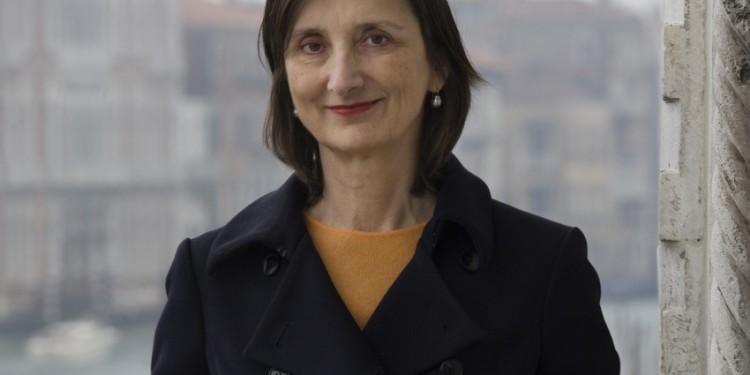
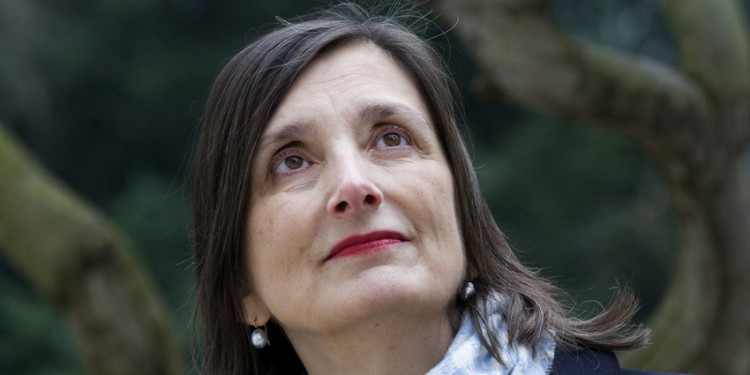
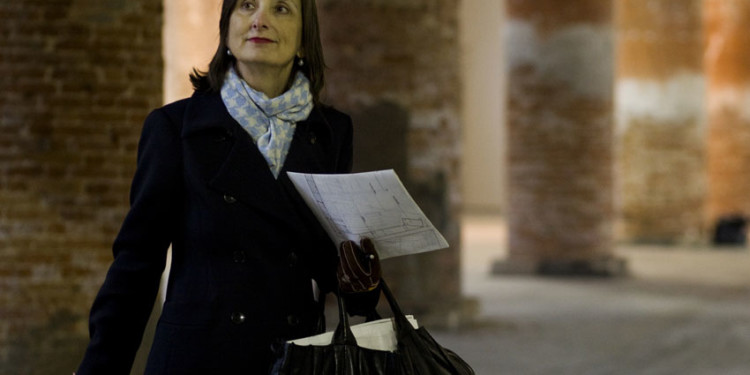
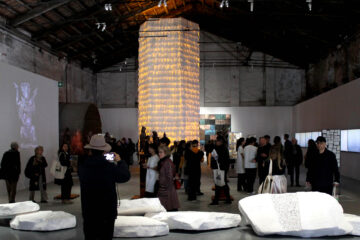
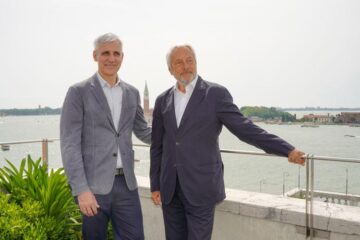
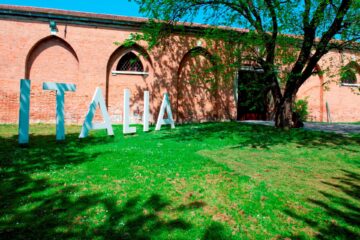
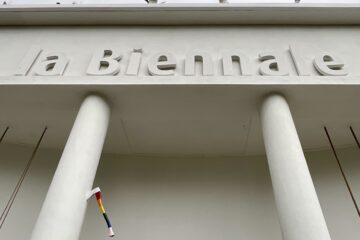

No Comment